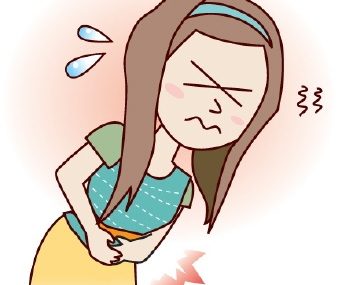Secondary Dysmenorrhea
What is secondary dysmenorrhea?
Secondary Dysmenorrhea (Acquired Dysmenorrhea) is an abnormal gynecological condition characterized by painful menstruations (painful menstrual periods). In most cases, the condition results from an underlying pathology such as endometriosis or adenomyosis. Less commonly, secondary dysmenorrhea may develop in women who have a tight cervical os (secondary to conization, thermocautery or cryocautery).
Painful menstruations usually occur when the uterus attempts to expel endometrial tissue through the cervical os (the endocervix or the endocervical canal); However, there are dozens of conditions that can cause Secondary Dysmenorrhea. Menstrual cramps may also be caused by a pedunculated submucosal fibroid or due to extrusion of an endometrial polyp into the uterine cavity (through the cervix). Diffuse abdominal pains before and during menstruation (menstrual cramps) are common in female patients with pelvic inflammatory disease (PID).[1]
Symptoms
What are the symptoms of secondary dysmenorrhea?
Common symptoms of secondary dysmenorrhea include:
- Acquired menstrual pain in the lower abdominal area, pain related to menses
- Abdominal pains before and during menstruation
- Depression
- Weakness
- Bad appetite
- Low-grade fever (subfebrile body temperature), an increase in body temperature between 37.1 ° C to 38.0 ° C
- Low blood pressure or hypotension.
- Heart palpitations
- Headaches
Causes
What are the causes of secondary dysmenorrhea?
Secondary dysmenorrhea can be a demonstration of an underlying pathological disease (active pathology) such as a pedunculated submucosal fibroid or due to extrusion of an endometrial polyp into the uterine cavity. Pelvic inflammatory disease may cause pelvic pain by stimulating nerve endings (pain receptors) in both eutopic and ectopic endometrial tissue. [1][2]
Pelvic inflammatory disease (PID) is an infection of the upper part of the female reproductive system that affects the tissue that lines the uterus (the endometrial tissue).
Endometriosis is a common cause of secondary dysmenorrhea (it is the cause of Secondary dysmenorrhea in half patients). In this case, pain is felt when the uterus attempts to expel old endometrial tissue through the cervical os.
Treatment
How to treat secondary dysmenorrhea?
If you have mild premenstrual cramps or period pains, take CITRAMON® or another pain reliever, such as aspirin, analgin, KETANOV®, ibuprofen, acetaminophen or naproxen. For fast effective relief, you have to take these pills as soon as menstruation or cramping starts. Alternatively, heat therapy will work best for you, place a heating pad on your tummy or lower back, as heat can help relieve pain from the muscle spasm.
Dilation and curettage (D&C) is a gold standard surgical procedure in which the cervix is dilated and a curette (a thin instrument) is used to scrape the uterine cavity. Dilation and curettage can provide up to 4 months of relief (3-4 months of relief). However, results may vary, some females feel relief immediately after the procedure.
Medications used may include prostaglandin synthetase inhibitors, oral contraceptives, progestines, denacol, etc.
Other forms of therapeutic procedures include myomectomy (to treat fibroids) or polypectomy (to remove endometrial polyps).
Next steps management
How to diagnose secondary dysmenorrhea?
Secondary dysmenorrhea is often only diagnosed and treated by physicians. Your doctor will tailor treatment options based on your symptoms. Secondary dysmenorrhea can be diagnosed using one or more of the following tests or procedures:
- Clinical interview and obtaining the disease history
- Pelvic ultrasound
- Hysteroscopy
References
Verified by: Dr.Diab (November 23, 2017)
Citation: Dr.Diab. (November 23, 2017). Secondary Dysmenorrhea. Medcoi Journal of Medicine, 7(2). urn:medcoi:article15596.














There are no comments yet
Or use one of these social networks